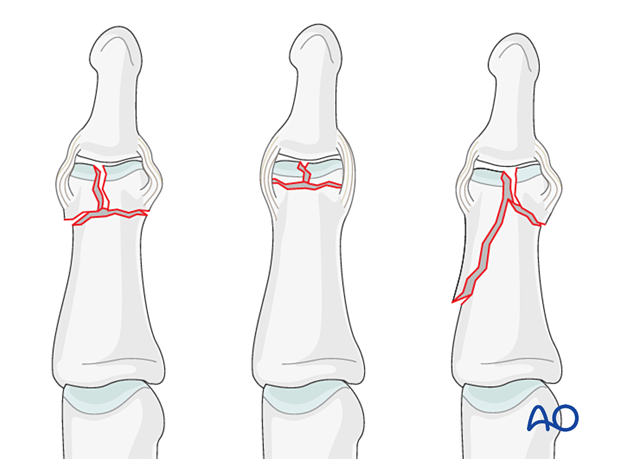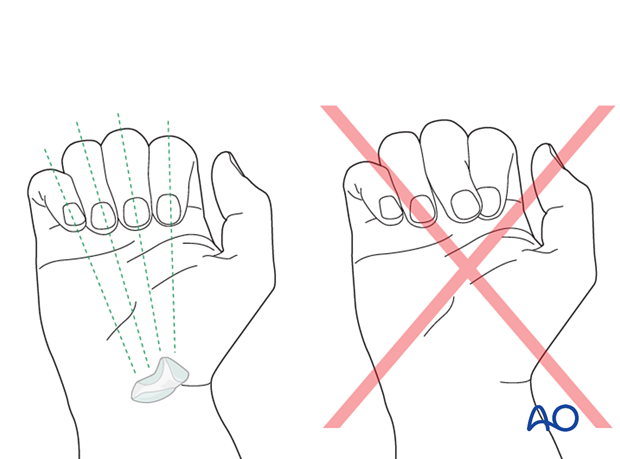Complete articular fracture of the distal end segment
Fracture type
Complete articular fractures of the middle phalangeal head are classified according to AO/OTA as 78.2–5.2.3C, where 2–5 indicates which finger is injured.
These fractures may be T- or Y-shaped, with a long or a short T. Another pattern of fracture is a combination of a long oblique fracture separating one condyle, together with a short oblique, or transverse, fracture separating the other condyle (sometimes called “reversed lambda” fractures, because of their resemblance to the Greek letter “λ“).

Further characteristics
Typically, these fractures are the results of axial load combined with lateral angulation of the finger.
Bicondylar fractures tend to be very unstable.
Reduction of articular fractures
Articular fractures should be reduced anatomically, otherwise, digital deformity and degenerative joint disease are likely to follow.
Rotational deformity
In fractures distal to the proximal interphalangeal (PIP) joint, overlap of neighboring fingers may occur when there is substantial rotational displacement.

Outcomes
Outcome of fractures of the middle phalanx is usually more favorable than those of the proximal phalanx. This is largely because limitations in distal interphalangeal (DIP) joint motion are not such a disability as similar stiffness of the PIP and metacarpophalangeal (MCP) joints.
Imaging
AP view of the whole hand and true lateral view of the finger are needed for diagnosis.













